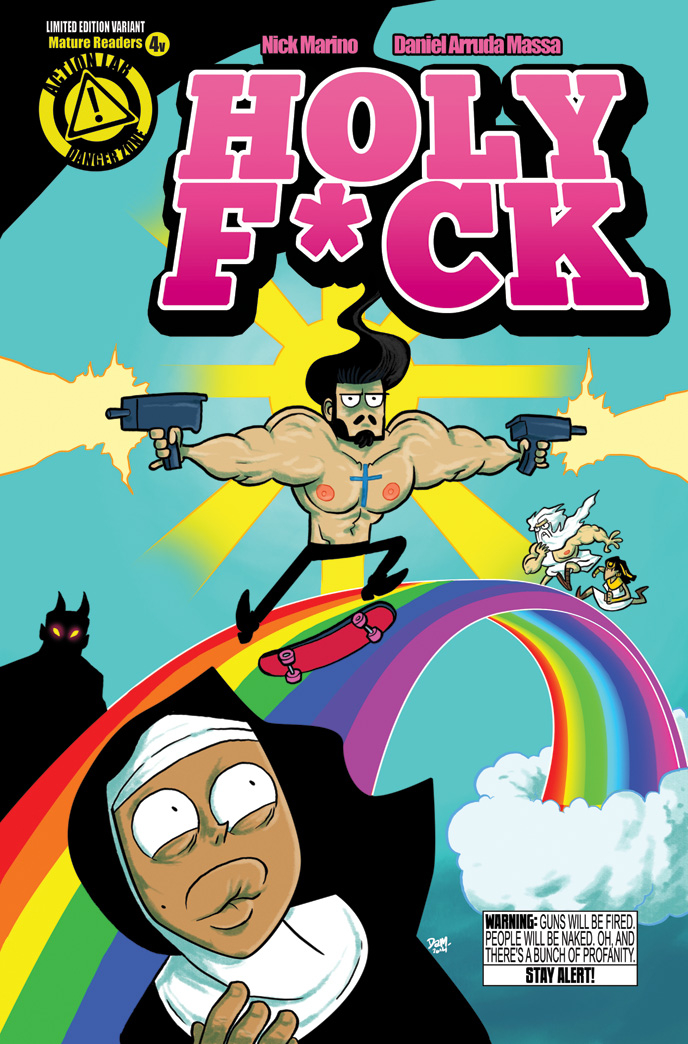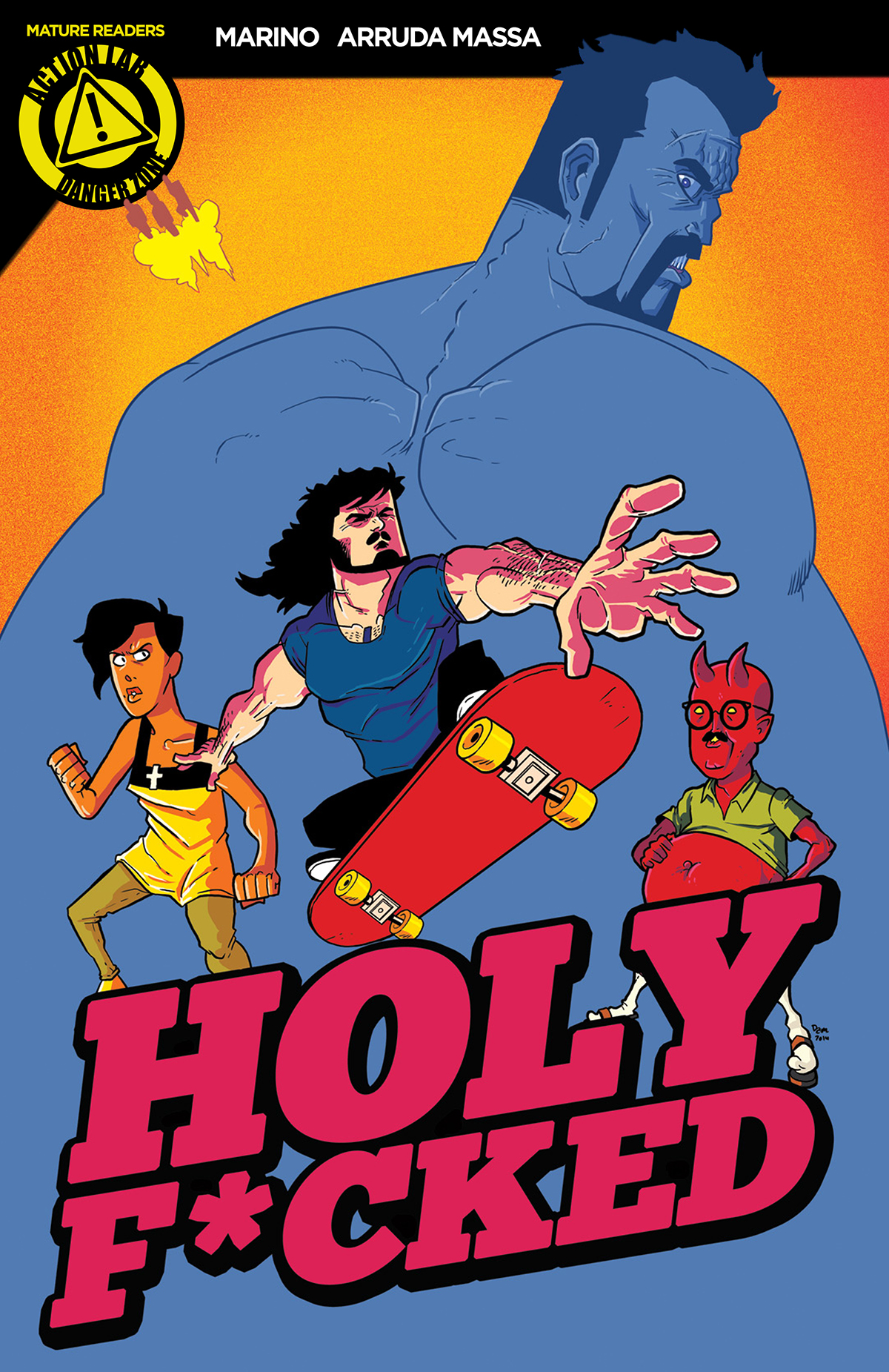 Today marks the release of the fourth and final part of Nick Marino and Daniel Arruda Massa’s Holy F*ck. The issue brings a high-action conclusion to Jesus, Satan, and the nun Maria’s struggle against Zeus, Isis, and the multi-pantheonic corporation Polydynamis’ attempt to plunge the world into nuclear chaos and feast off the belief they hope this will inspire.
Today marks the release of the fourth and final part of Nick Marino and Daniel Arruda Massa’s Holy F*ck. The issue brings a high-action conclusion to Jesus, Satan, and the nun Maria’s struggle against Zeus, Isis, and the multi-pantheonic corporation Polydynamis’ attempt to plunge the world into nuclear chaos and feast off the belief they hope this will inspire.
There are three narrative threads running throughout Holy F*ck #4: Jesus’ attempt to stop Polydynamis’ missiles; Satan and Maria’s fighting their way through the diving company board; and Zeus’ attempt to keep his coalition together in the face of this final thrust. This choice of words is not haphazard; without spoiling what seems to be the major gag of the issue, the way Jesus handles the missiles cannot be described in any other way. (Ok, maybe a little spoiler: as a colleague put it, “their title is truth in advertising!”) Meanwhile, his companions blast their way through a small horde of nameless god-grunts before arriving in front of Zeus to effect the series’ final, and somewhat anti-climactic resolution. The whole thing is over too quick, rushing through developments so as to give more room to milk a couple of jokes.
I have reviewed the three previous issues for Sacred and Sequential, and consistently found Holy F*ck to be missing that certain something that would bring me to feel that I’ve really enjoyed it as a whole. The artwork has been consistent and the writing has delivered several independently funny gags that have not fully meshed with each other, making the final product seem directionless, almost scattershot. Still, every issue has managed to keep me wanting to see what happened next. Sadly, I feel that where the series ultimately ends up, with a nod to corny sit-com endings, just isn’t all that satisfying.
I’ve talked a bit in these reviews about the religious satire and (perhaps somewhat banal) religious thinking that the series has, on occasion, indulged in. In fact, I finished the last review on a note of hope that this type of thinking would return in the conclusion. That doesn’t really happen, though. The entire thread about belief, about love versus fear, takes up one page. Maria tells Zeus that he’s just a myth that no-one believes in anymore, after which he vanishes in a puff of logic. This asks more questions than it answers. Why would irrelevant gods ever pose a threat in the story’s world, if belief is necessary condition for their existence? How have Zeus and the other gods sustained themselves up to that point? And why have the writer and artist brought them back? Simply to reassert their irrelevance? What satirical purpose does this serve? (And is Jesus and Satan’s existence predicated on the same premise, or are they somehow different?) The next page returns to the issue’s big joke. In the end, then, the series’ balance between juvenilia and satire – two things that can work very well together – ends up tipping too strongly toward the latter to be rewarding in a lasting way.
But here’s the kicker. I’ve known for a while that a sequel – Holy F*cked – is in the making. And, despite every criticism I’ve levied against the series, I still want to read it.
